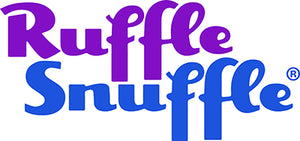Innovations in Veterinary Surgery: The Latest Minimally Invasive Technologies

In the rapidly evolving world of veterinary medicine, staying abreast of the latest advancements is crucial for providing the best care for our animal companions.
One of the most significant shifts in recent years has been the adoption of minimally invasive surgical techniques. These methods not only reduce the recovery time for pets but also minimise the discomfort they experience during and after surgery.
The Rise of Robotics in Veterinary Surgery
Robot-assisted surgery is no longer confined to the realm of human medicine. In veterinary practices, robotic systems are increasingly being deployed to perform complex surgeries with precision and control that far surpass human capabilities.
These robotic systems allow vets to operate through smaller incisions, which translates to less pain and quicker recovery for pets.
The use of robotics also enhances the accuracy of procedures, reducing the likelihood of complications. For example, robotic systems can be used in orthopaedic surgeries to precisely place screws and plates, ensuring optimal alignment and stability for healing bones.
Advancements in Imaging Techniques
Beyond robotics, the field of veterinary surgery has seen remarkable advancements in imaging techniques. High-definition 3D imaging now provides veterinarians with incredibly detailed views of the internal anatomy of animals.
This level of detail is crucial when planning and executing minimally invasive procedures, ensuring that every move is made with full knowledge of the underlying structures. One of the most impactful imaging advancements is intraoperative imaging.
This technology allows surgeons to view real-time images during the surgery, making adjustments on the fly and verifying the success of the procedure before the animal leaves the operating table.
This immediate feedback loop significantly reduces the risk of follow-up surgeries and enhances the overall safety of surgical procedures.
Improvement in Surgical Procedure
A pivotal component in minimally invasive veterinary surgery is the use of specialised equipment, particularly veterinary laparoscopic equipment.
Laparoscopy involves making a small incision through which a camera and surgical tools are inserted, allowing the surgeon to view and operate on the internal organs without making large cuts.
This technique is widely used for procedures such as biopsies, spaying, and organ repair.
The equipment used in these procedures has evolved dramatically, with newer models offering enhanced flexibility, better control, and higher-quality imaging.
This not only makes the surgeries safer and faster but also reduces the physical strain on veterinary surgeons, enabling them to perform at their best.
Advancements in Telemedicine and Remote Monitoring
Telemedicine and remote monitoring are transforming veterinary surgery by enabling vets to consult with specialists globally during complex procedures and allowing for the continuous postoperative monitoring of pets from their homes.
This technology not only ensures that pets receive expert advice regardless of their location but also significantly reduces the need for prolonged hospital stays.
By using devices that track vital signs and recovery progress, veterinarians can provide timely interventions and personalised care plans, enhancing the recovery process and overall outcomes for the animals.
Embracing these technologies not only improves the standard of care provided but also significantly enhances the quality of life for our pets. As pet owners, it's comforting to know that the veterinary profession is continually advancing, ensuring our beloved animals receive the best possible care in their times of need.
